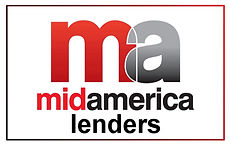The single family loan limit, set by the Federal Housing Finance Agency (FHFA), plays a crucial role in determining the maximum amount a conventional lender can approve for a home purchase. This limit, adjusted annually to reflect the current housing market conditions, serves as a guideline for lenders and helps them assess the financial feasibility of home loans.

Single Family Loan Limit: The Standard Threshold
The baseline conforming loan limit, also known as the national conforming loan limit, represents the standard maximum mortgage amount that a conventional lender can approve for a single family property in most parts of the United States. This limit is established by the Federal Housing Finance Agency (FHFA) and is reviewed and adjusted annually to reflect the prevailing housing market conditions and average home prices across the country.
For 2024, the baseline conforming loan limit (single family loan limit) stands at a substantial $766,550 for a single-unit property. This implies that conventional lenders can approve mortgages up to this amount for homes in most areas of the United States. The baseline conforming loan limit serves as a benchmark for lenders when evaluating mortgage applications, ensuring that they adhere to risk management guidelines and maintain a diversified portfolio of loans.
The baseline conforming loan limit plays a significant role in dictating the overall affordability of homeownership. Setting a maximum loan amount helps to manage the risk associated with large mortgage portfolios and promotes responsible lending practices. This, in turn, contributes to a stable and sustainable housing market.
Impact of the Baseline Conforming Loan Limit
The baseline conforming loan limit (single family loan limit) has a tangible impact on the housing market in several ways:
- Pricing Influence: The conforming loan limit (single family loan limit) serves as a price floor for homes in most areas, as lenders are generally reluctant to approve mortgages that exceed the limit due to increased risk and lower underwriting flexibility. This helps to maintain price stability in the market and prevents excessive price inflation.
- Borrower Qualification: The conforming loan limit (single family loan limit) influences borrower qualification requirements, as lenders may scrutinize borrowers more closely for loans exceeding the limit. This may result in higher down payment requirements, tighter credit score standards, and more stringent income documentation.
- Lender Decisions: The conforming loan limit (single family loan limit) directly affects lender decisions regarding the types of mortgages they offer and the geographical areas they serve. Lenders may focus on conforming mortgages in areas where the limit is lower and offer jumbo mortgages in higher-cost areas where conventional loans may not be feasible.
- Mortgage Product Options: The conforming loan limit (single family loan limit) plays a role in shaping the availability and variety of mortgage products. Lenders may tailor their mortgage offerings to cater to the specific needs of borrowers and the conforming loan limits applicable in their target markets.
In essence, the baseline conforming loan limit (single family loan limit) serves as a regulatory tool that balances the interests of borrowers, lenders, and the broader housing market. It ensures that homeownership remains accessible to a wide range of individuals while also maintaining responsible lending practices and promoting market stability.
Single Family Loan Limit Chicago
For 2024, the baseline conforming loan limit in Chicago is $726,200. This means that conventional lenders can approve mortgages up to this amount for single-family homes in Chicago.
High-Cost Area Loan Limits: Addressing Elevated Housing Markets
In regions characterized by higher housing costs, the baseline conforming loan limit (single family loan limit) is augmented to accommodate the inflated property values. These elevated territories are designated as high-cost areas. For 2024, high-cost area loan limits range from $824,275 to a substantial $1,149,825. The precise high-cost area loan limit for a specific property is determined by the county and metropolitan statistical area (MSA) in which it resides.
High-Cost Area Loan Limits in Chicago
While the baseline conforming loan limit applies to most areas of Chicago, certain neighborhoods are considered high-cost areas. In these areas, the conforming loan limit is higher to accommodate the inflated property values. For 2024, the high-cost area loan limit for Chicago ranges from $879,250 to $1,189,825.
FHA Loan Limits: Addressing Affordability in High-Cost Zones
The Federal Housing Administration (FHA), a government agency, also establishes loan limits for mortgages it insures. FHA loans are more accessible to borrowers with lower incomes. For 2024, the standard FHA loan limit for a one-unit property is $498,257. However, FHA also recognizes high-cost areas, where loan limits extend up to $1,149,825.
| Year | Baseline Conforming Loan Limit | High-Cost Area Loan Limit (Lowest) | High-Cost Area Loan Limit (Highest) |
| 2024 | $766,550 | $824,275 | $1,149,825 |
| 2023 | $726,200 | $879,250 | $1,189,825 |
| 2022 | $647,200 | $970,800 | $1,374,825 |
| 2021 | $548,250 | $824,275 | $1,250,125 |
| 2020 | $510,400 | $726,550 | $1,100,625 |
FHA Loan Limit Chicago
The Federal Housing Administration (FHA) also sets loan limits for FHA-insured mortgages. FHA loan limits are typically lower than conforming loan limits, making them more accessible to borrowers with lower incomes. For 2024, the standard FHA loan limit for a single-family home in Chicago is $472,030. However, FHA also recognizes high-cost areas, where loan limits extend up to $1,149,825.
Types of Conventional Mortgages: Conforming vs. Jumbo
Conventional mortgages, the most popular type of home loan, can be broadly categorized into two main types: conforming and jumbo. Conforming mortgages adhere to the requirements set by Fannie Mae and Freddie Mac, two government-sponsored enterprises that purchase mortgages from lenders. Jumbo mortgages, on the other hand, exceed the conforming loan limit.
Advantages of Conforming Mortgages: Wider Reach and Competitive Rates
Conforming mortgages offer several compelling advantages:
- Wider Availability: Conforming mortgages are more widely available from a larger pool of lenders.
- More Competitive Interest Rates: Conforming mortgages typically command lower interest rates compared to jumbo mortgages.
- Smoother Pre-approval Process: The pre-approval process for conforming mortgages is generally more streamlined and less stringent.
Considerations for Conforming Mortgages: Meeting Eligibility Criteria
Despite their advantages, conforming mortgages come with certain considerations:
- Eligibility in High-Cost Areas: Conforming mortgages may not be available for properties in high-cost areas where the loan amount exceeds the conforming loan limit.
- Larger Down Payment Requirements: Conforming mortgages may require a larger down payment than jumbo mortgages.
- Stricter Underwriting Guidelines: Conforming mortgages are subjected to more rigorous underwriting guidelines, making them less flexible for borrowers with unconventional financial circumstances.
Bottom Line: Navigating the Single Family Chicago Loan Limit
The single family loan limit serves as a crucial factor in homebuying decisions. While conforming mortgages are a popular choice for many borrowers, jumbo mortgages may be better suited for those with higher incomes and the ability to meet larger down payment requirements. Carefully evaluating both options and consulting with a qualified mortgage professional can help homebuyers make informed choices that align with their financial capabilities and long-term housing goals.

